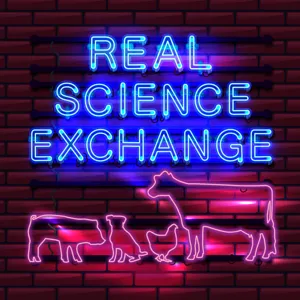This episode is from a webinar presented by Dr. Sandra Godden from the University of Minnesota Department of Veterinary Population Medicine. To view the full webinar and access the slides referenced during this podcast, visit balchem.com/real science and scroll down to the webinar presented on November 8, 2023.
Dr. Godden begins with the reminder that despite decades of research and definite advances in colostrum management, there's still a lot to learn and research. Her goal is to give an update on new findings that can be utilized in your colostrum management program. (0:21)
Promoting calf health and growth is a balance between maximizing immunity and minimizing infectious disease challenges. Colostrum is one aspect of maximizing immunity and provides passive immunity in the form of immunoglobulins. It also contains bioactive compounds, immune factors, growth hormones, leukocytes, and nutrients. (1:09)
We can measure adequate transfer of passive immunity via serum immunoglobulin G levels, where anything greater than 10 grams per liter is a pass. Passive transfer of immunity is associated with reduced morbidity and mortality, especially in the first 2-3 months of life. Successful passive transfer has many other intermediate and long-term benefits, including improved growth rate and feed efficiency, leading to even longer-term benefits of decreased age at first calving and potentially improved milk production in the first and second lactation. (4:18)
When building a comprehensive colostrum management program, Dr. Godden distills it down to the five Qs: quality, quantity, quickness, squeaky clean, and quantifying. Starting with quantifying passive transfer, in a perfect world, we would have a quick, inexpensive, on-farm serum IgG test that could be run on whole blood. Unfortunately, that test does not exist. In research studies, we send serum samples off to reference labs to have serum IgG tested. On-farm, we use indirect tests such as serum Brix or serum total protein. Historically, the literature has said that a serum total protein of somewhere between 5.0 and 5.2 grams per deciliter most accurately predicts that IgG value of 10 grams per liter. If greater than 10 g/L IgG is a pass, is a higher concentration better? Yes. A good goal would be for 90% of the calves to have serum IgG higher than 10 g/L. More specifically, goals are around 40% of calves in the excellent zone of 25 or greater, roughly 30% of calves in the good zone of 18-25, and around 20% in the fair zone of 10-18. Dr. Godden references the corresponding Brix and total serum protein readings in her slides. (7:24)
Quality refers to the concentration of IgG in the colostrum, and experts have suggested that be at least 50 grams per liter or higher. This corresponds to a Brix reading of approximately 22% or higher. Several factors influencing colostrum quality are under our control, including the dry cow vaccination program, feeding a balanced dry cow ration, avoiding stressors during the dry period, avoiding excessively short dry periods, and milking cows out as soon as you can after calving. (16:18)
When it comes to quantity, a larger volume at first feeding will result in higher IgG concentrations in the calves. One study compared feeding two or four liters at first feeding with a second feeding of two liters at 12 hours. The higher volume first feeding showed better results. (29:23)
As for quickness, IgG absorption efficiency is optimal in the first couple of hours after birth but is then slowly reduced as gut closure occurs. Ideally, we want to feed the calf as soon as possible, hopefully within one to two hours of birth when possible. (30:35)
The last Q is squeaky clean or cleanliness, specifically the level of bacterial contamination in colostrum. Obviously, we don't want to feed colostrum that is laden with pathogens that can cause disease. However, high bacteria counts in colostrum have also been associated with reduced absorption of IgG. Dr. Godden details a number of critical control points that can be assessed if colostrum cleanliness is an issue of concern. (38:19)
Dr. Godden finishes the episode by taking questions from the webinar audience, ranging from average colostrum volume collected at first milking to what temperature colostrum should be frozen at to heat stress impacting quality and quantity of colostrum. (49:20)
Please subscribe and share with your industry friends to bring more people to join us around the Real Science Exchange virtual pub table.
If you want one of our new Real Science Exchange t-shirts, screenshot your rating, review, or subscription, and email a picture to anh.marketing@balchem.com. Include your size and mailing address, and we’ll get a shirt in the mail to you.








